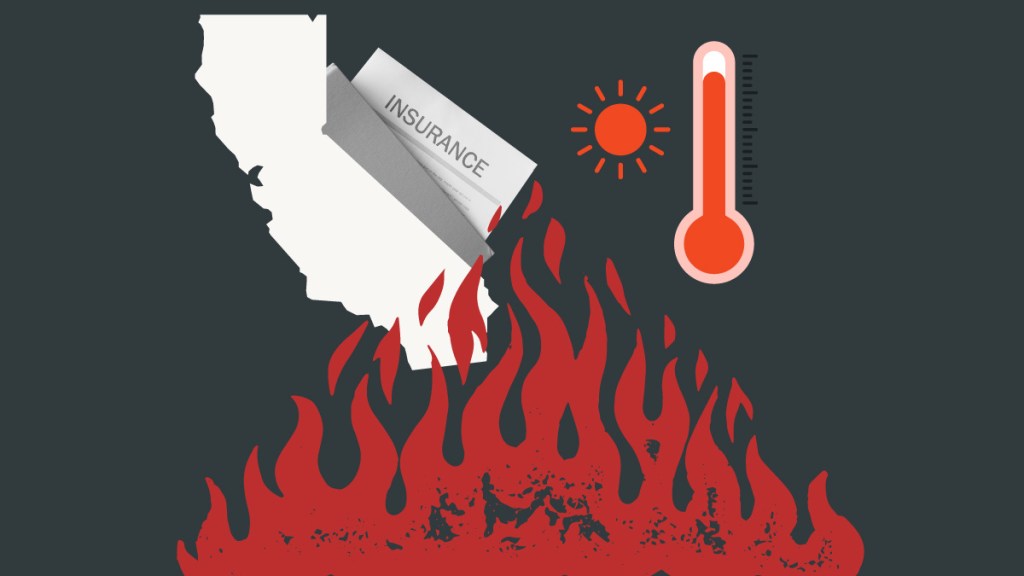
Latest update: Jan. 13 at 8:30 am central time.
As wildfires tear through Southern California, the looming impacts on real estate and insurance are also at the forefront of Californians’ minds.
Multiple fires have burned more than 60 square miles in the Los Angeles area, placing more than 150,000 residents under evacuation orders and killing at least 24 people, CBS reported on Monday. Nearly 12,000 homes, businesses and other structures have been destroyed.
On Wednesday, the Office of the Comptroller of the Currency (OCC) took protective measures by issuing a proclamation that allows national banks, federal savings associations, and federal branches and agencies of foreign banks to close their offices in areas of California affected by the fires.
California’s wildfire season typically begins in June or July and runs through October, according to the Western Fire Chiefs Association. The season can begin earlier and end later due to decreased rainfall as a result of climate change. Other previous wildfires, including December’s Malibu fires, have led to more than 1 million acres being burned statewide in 2024, according to CAL FIRE.
Michael Nourmand, president of Beverly Hills-based Nourmand & Associates Realtors, said that while he hasn’t had to evacuate, he knows several people whose homes have been destroyed.
“It’s a very somber day in LA,” he said, adding that his bags have been packed for a potential evacuation. “Some people have already asked what this means for their property, but the main focus is safety right now.”
Nourmand said that going forward, attention will be placed on which properties are available for lease and how to rebuild communities. “I think the emotional impacts will be very high. … From a business standpoint, this is another challenging thing in the LA real estate market.”
Mauricio Umansky, founder and CEO of The Agency in Los Angeles, said that there is “nobody not affected by the fires,” adding that some of his business partners and managers have lost their homes. “We’ve got clients calling us frantically looking for leases. I’m calling developers asking about vacancies to see if we can figure out some short-term rentals to house people,” he said.
Obtaining home insurance in California has been a long-standing challenge. While California law does not require homeowners to have fire insurance, most mortgage lenders do. In the spring of 2024, State Farm — one of the largest private insurers in the state — announced that it had canceled a total of 72,000 policies in California, including 30,000 for owner-occupied homes.
Michael Ashker, chairman and CEO of FortressFire, a technology company that partners with the California Association of Realtors to offer wildfire disclosure reports, said that many of the rising premiums in California are tied to wildfires.
“Insurance companies are obviously concerned, especially when you see something like the extraordinary events that are happening down in SoCal right now,” he said. “It certainly is not going to drive costs down. … You’re going to have massive losses. Who’s bearing the risk? It’s not just the insurance companies, it’s the big reinsurance pools that sit behind the insurance carriers.”
Ashker anticipates big losses. “They’re all going to probably go back to going to the state to ask for premium increases for this unknown risk. But yeah, in our view, the path it’s on is not sustainable, because it’s a pretty blunt tool to say the only way that I can handle covering properties is to come to rate their premium,” he said.
But Ashker also sees problems on the horizon beyond home insurance companies leaving the state altogether.
“There are some new regulations that just got approved by the California Department of Insurance which allows the insurers to now reprice their risk based on catastrophic models. And the trade-off is that they have to write some percentage of their book and business in higher (risk) wildfire zones,” he explained. “I don’t think that solves the problem. I think it just gives the carriers the ability to increase premiums, which are already having a profound effect on real estate prices.”
CJ Giuditta, vice president and senior adviser of the private client group at World Insurance Associates, works directly with high net worth homeowners — including athletes and entertainers — in California and other high-risk areas to secure insurance and manage risk. Giuditta has witnessed how insurance models cannot provide enough coverage to protect clients against natural disasters.
“Essentially, I think whether it was the insurance department in California or politically, they were trying to protect policyholders in California by not allowing any price increases or drastic price challenges … and that essentially put carriers in a position where they just felt like moving on is better than staying there and trying to get rated. The damage had already been done,” Giuditta said.
He added that “anyone who has insurance presently has already been sent through the wringer.” After being in the insurance space for 25 years, he’s seen the role of the insured change.
“They can’t rely solely on the insurance company to protect their asset,” he said. “They have to think of creative ways. They can’t go with just any old price shopper that’s going to save them a couple hundred on insurance, because that’s not what insurance is really for.”





